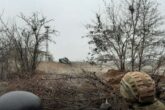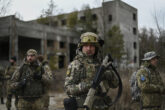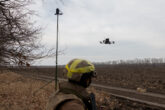August 18, 2021
From Desert Storm to Inherent Resolve: The Evolution of Airpower
On June 27, U.S. fighter jets struck weapons storage facilities used by Iranian proxy groups Kataib Hizballah and Kataib Sayyid al-Shuhada in retaliation for launching drone attacks on U.S. military facilities in the region. This was the second set of airstrikes ordered by the Biden administration in order to deter Iran and its proxies from attacking U.S. equities in the Middle East.
Just several weeks later, U.S. airpower was used once again, but this time in Afghanistan. “Over-the-horizon” airstrikes sought to bolster Afghan defenses, blunt the Taliban’s momentum, protect key urban areas, and stave off the collapse of the Afghan state.
Presidents and their advisers should be mindful that, although innovations in warfighting may achieve tactical and operational aims, they do not guarantee strategic success.
President Joe Biden’s decision to use fighter jets to strike Iranian infrastructure in Syria and Iraq, and to defend key Afghan cities, follows a familiar pattern. Since the 1991 Gulf War, U.S. presidents have chosen time and time again to use airpower to protect U.S. interests abroad. Since the six-week air campaign that immobilized and demoralized Saddam Hussein’s forces defending Kuwait, airpower has become the centerpiece of U.S. military interventions in Bosnia and Herzegovina, Kosovo, Afghanistan, Libya, and, once again, Iraq.
The U.S. airstrikes against Iranian-backed militia groups located along the Iraqi-Syrian border, and the uptick in American air support to Afghan forces, demonstrate how the model of airpower perfected against the Islamic State in Iraq and the Levant (ISIL) in Iraq and Syria has evolved. But the limited strikes on Iranian proxies and Taliban forces stand in stark contrast to the continued strikes on Islamic State leaders and targets in Iraq and Syria also authorized by the Biden administration. Previous military successes are just as likely to distort policymakers’ thinking as prior failures. The Biden administration should not harbor unrealistic expectations about what airpower can achieve, nor should it succumb to the temptation to employ airpower because it is a low-risk form of taking action.
Read the full article from War on the Rocks.
More from CNAS
-
Defense / Transatlantic Security
When Defense Becomes Destruction: Austria-Hungary’s Mistake and Ukraine’s RiskThis article was originally posted on War on the Rocks. The southeastern Polish city of Przemyśl, with its elegant 19th century Habsburg-era train station, remains one of the ...
By Franz-Stefan Gady
-
Defense / Transatlantic Security
Ukraine’s Catch-22 MomentThis article was originally published in the Financial Times. In Joseph Heller’s wartime classic, Catch-22, the protagonist Yossarian seeks out the US army surgeon Doc Daneeka...
By Franz-Stefan Gady
-
CNAS Insights | Budgetary Own Goals Undermine “Speed and Volume”
On November 7, Secretary of Defense Pete Hegseth laid out a plan to overhaul the Department of Defense’s (DOD’s) acquisition system. Placing an emphasis on delivering new capa...
By Philip Sheers, Carlton Haelig & Stacie Pettyjohn
-
Drones: Who Is Making the New Weapons of War?
From Ukraine and Russia to Gaza and Sudan, drones have become a key weapon of war. Which companies are making them, and profiting from this rapidly expanding but controversial...
By Stacie Pettyjohn




